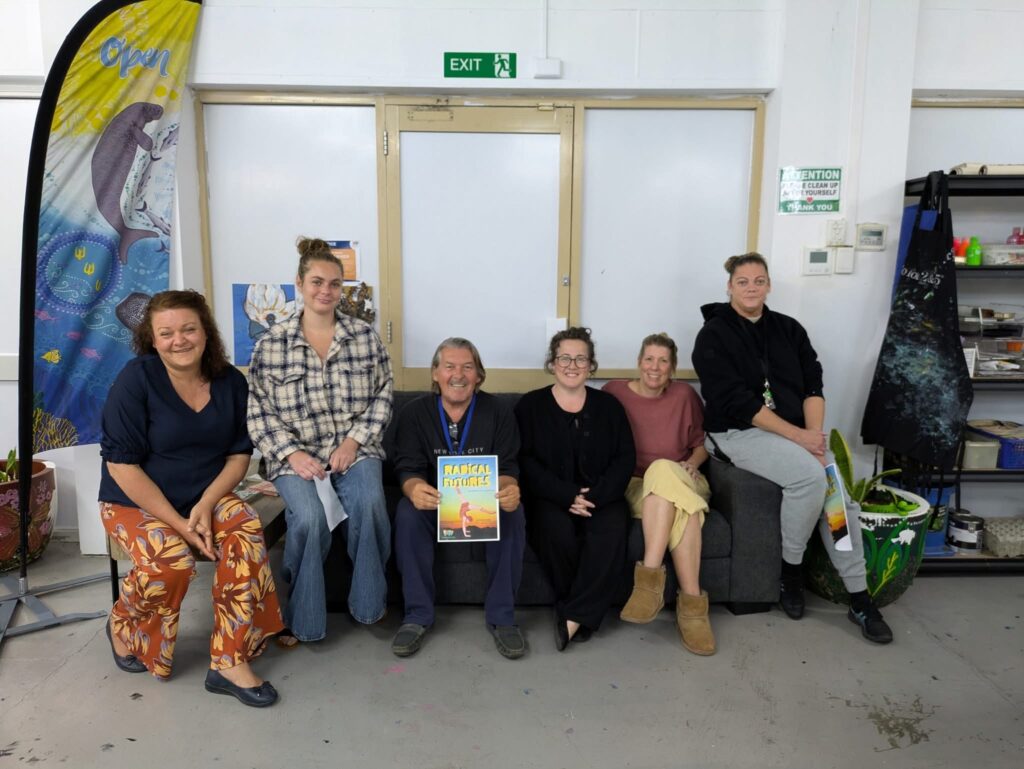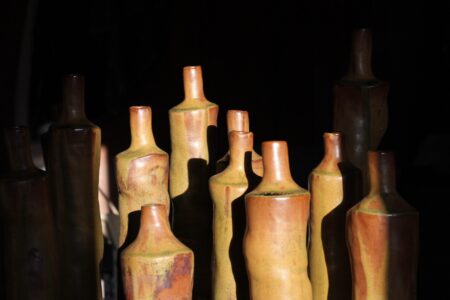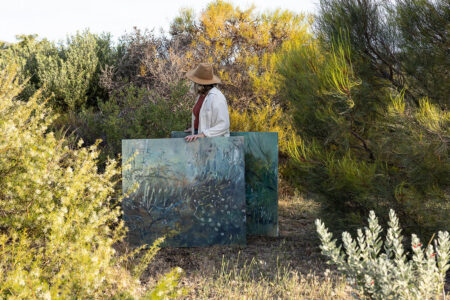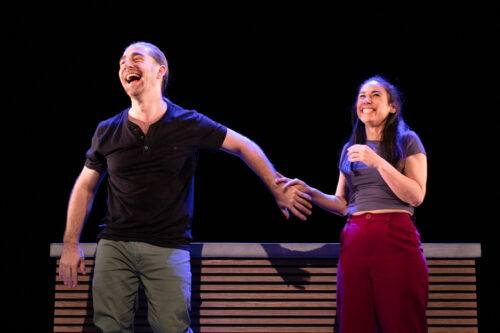Regional Arts Triennial: Radical Futures Launches Statewide
Regional Arts WA are proud to support the Regional Arts Triennial with this year’s theme ‘Radical Futures.’ We’re excited to share details about upcoming exhibitions and performances launching across the state beginning in August.
This is the third Regional Arts Triennial, and these exhibitions explore meaningful questions about sustainable futures and cultural wisdom. They create a statewide conversation that bring together diverse perspectives on what radical futures might look like.
The regional exhibitions will take place first, followed by a curated presentation at John Curtin Gallery in 2026, after which a survey exhibition will be toured regionally.
This thoughtful and challenging project invites everyone to see the world differently, from diverse viewpoints around WA. This project is supported through the State Government’s Regional Exhibition Touring Boost, delivered by ART ON THE MOVE, which is the main funder of this initiative.
Below are the exhibitions that can be viewed from August – October. Keep an eye out for more event updates.
August | Solid Ground Exhibition | Gwoonwardu / Carnarvon
Runs August 29th – April 4th
For this year’s statewide Radical Futures brief, the community engagement project invited people to take part in an activity called “Postcards from the Future“.
The exhibition brings together 15 artists from across the region, with the majority based in Gwoonwardu / Carnarvon, and contributions from Guthaagudu / Shark Bay and Warnangura / Exmouth.
The concept first came to life in a humble pop-up tent at the Jamba Nyinayi Festival on Cardabia Station (that beautiful stretch just inland from Murlanda / Coral Bay) over the Easter long weekend. Visitors were invited to project themselves forward in time, then write postcards to their present-selves describing how their aspirations for themselves, their communities, and their world had manifested.
Children imagined themselves at 35, proud of their successes. Artists dreamed of studio spaces at 70. And all the while, festival headliner ‘Goanna’ played their iconic song Solid Rock, which quickly became the anthem of both the festival and the project.
The activity continued at the Carnarvon Community Art Hub and Carnarvon Art Gallery, where strong themes emerged around the land, the environment, and protecting the untouched beauty of the Yamatji Country.
Place and Cultural Development Coordinator at the Shire of Carnarvon, Keely Robertson said; “The word “solid” is quintessentially Carnarvon: it’s how we describe something (or someone) reliable, valuable, and good. When reviewing the artist submissions, this localised theme rose powerfully to the surface: Solid Ground.”
There’s a quiet pride evident in this contribution to the Regional Arts Triennial, a celebration of place, distinctive voice and remarkable artistic talent. Local curator Rochelle O’Brien, with support from the Gallery team and visiting artist Stuart McMillan, guided by statewide Regional Arts Triennial (RAT3) curator Sarah Roots, have created something that feels both local and universally resonant in Radical Futures: Solid Ground.
Radical Futures: ‘Solid Ground’ opens on Friday 29 August, from 5.30pm -7.30pm at the Shire of Carnarvon Library & Art Gallery (18 Egan Street, Carnarvon).

September | We Walk Together | Miriuwung and Gajerrong Country in Kununurra & Rubibi / Broome
Runs September 11th – October 2nd across three sites. Check dates for each location.
From September through to October, the Kimberley region will present two exhibitions for the Regional Arts Triennial 3 (RAT3), both titled “We Walk Together”.
This interpretation of the Radical Futures brief highlights the importance of community collaboration and cultural continuity, contrasting with Gwoonwardu / Carnarvon focus on environmental sustainability.
A distinguished Indigenous curatorial team has led this project, headed by artist/curator Dora Griffiths from Waringarri Aboriginal Arts in Kununurra. Dora Griffiths mentors two emerging curators; Jessie Ward in Kununurra and Tracey Mulardy in Rubibi / Broome.
The Kimberley region has an immense and complex landscape and history. It is the traditional country for over 30 different Aboriginal groups, with many perspectives to be shared. With Cathy Cummins as Curatorial advisor, this artistic team has curated exhibitions in three locations, showcasing artists from a range of cultural locations, and emphasising the collective journey of Indigenous and non-Indigenous artists walking together toward a shared future.
The exhibitions will create a comprehensive representation of the Kimberley’s artistic voice. Alongside the exhibitions, Art on the Move will deliver their ‘Gallery Fundamentals’ program for participating artists, further strengthening the region’s artistic infrastructure.
Those wishing to catch the exhibition in Kununurra (Miriuwung and Gajerrong Country) can head to Artopia Gallery from September 11th through September 22nd.
For Rubibi / Broome residents or travellers, you can find the exhibition at two locations: the Octagon site (9 Farrell St) and The Library Annex at the University of Notre Dame. Both venues will be open from September 26th until October 2nd, 10am – 4pm daily.
The Rubibi / Broome exhibition will be launched by the Minister for the Kimberley and for Regional Development, Hon Stephen Dawson, on September 26th at the Octagon site.
Participating Artists:
Artists in the Rubibi / Broome exhibition include Rona and Shontae Charles, Alice Boardman, Amelia Jajko, Vivienne McDermott, Helena and Jenny Butt, Isaac Barber, Jaimee Wright, Venetta Yananwana, Leah Umbagai, Michael Torres, and Naomie Hatherley.
Artists participating in the Kununurra exhibition include Ben Ward, Nathan Thomas, Jan Parish, Steve Cutts, Jackie Ellis, Kyjan Wesley, Antonia Aitken, Amy Mathers, Jeane Barnes, and a collective work from Balgo artists Sadie Paddoon, Anne Ovi, Jane Gimme, Dulcie Nanala, Imelda Gugamen, Magda Lee, and Tossie Baadjo.
Disclaimer: We make every effort to ensure Indigenous Country and language group names in our articles are accurately fact-checked. However, we acknowledge that these may sometimes be incorrect, as place names can be fluid and contested. We welcome your feedback as we try to move the dial on reaching our goal of inclusive naming practices. Our heartfelt thanks go to the Traditional Owners who have provided significant information in supporting Regional Arts WA in recognising their homelands in a culturally appropriate way.




